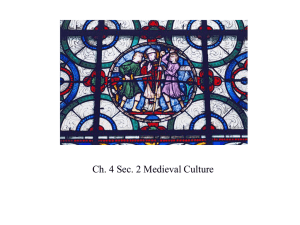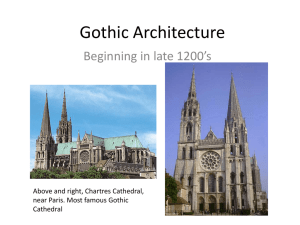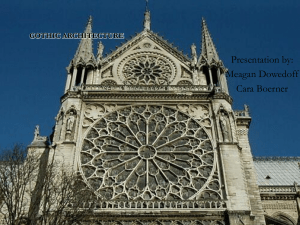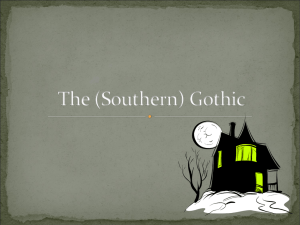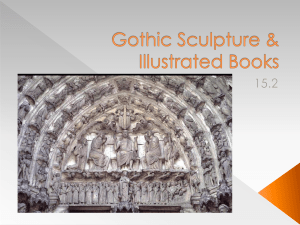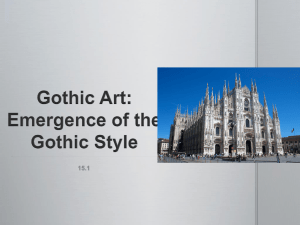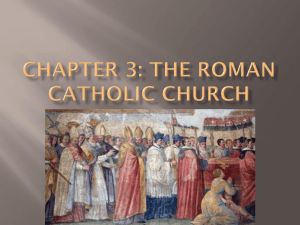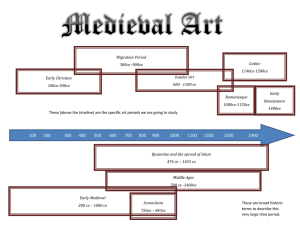14.1 Church Reform and the Crusades
advertisement
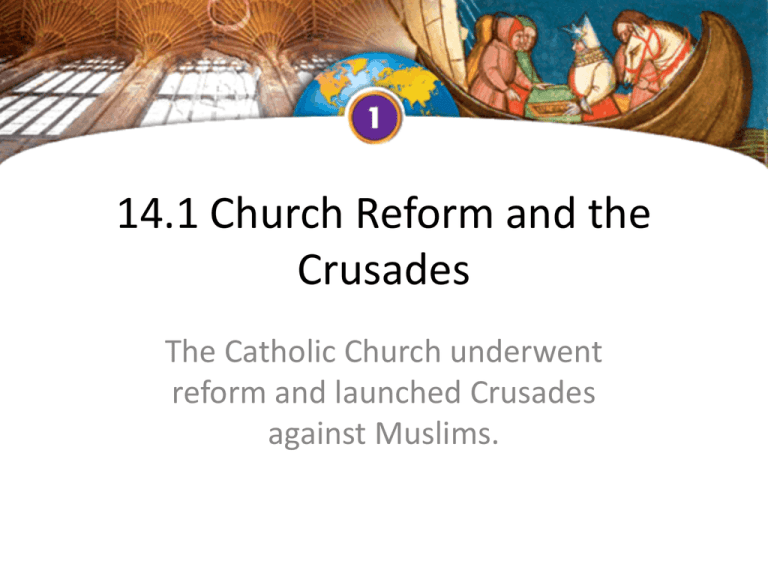
14.1 Church Reform and the Crusades The Catholic Church underwent reform and launched Crusades against Muslims. The Age of Faith • Spiritual Revival – Starting in the 900s, monasteries help bring about a spiritual revival – Reformers help restore and expand Church power Coat of Arms of Cluny Abbey: "Gules two keys in saltire the wards upwards and outwards or overall a sword in pale argent". Founded in 910, this is the Benedictine Abbey of Cluny as it looked in 2004. Problems in the Church • Some Church officials marry even though the Church objects • Some officials practice simony—selling religious offices • Kings use lay investiture to appoint bishops • Reformers believe only the Church should appoint bishops This is an illustration of the concept of “lay investiture.” In this picture a king from the Middle Ages is handing a bishop his “shepherd’s crook” a symbol of the office of bishop. The Catholic Church insisted that bishops were chosen by the Pope, not by kings. Pope Gregory Vs Henry IV • PG questioned KH’s authority to pick bishops. • KH tried to get PG removed as Pope. • PG excommunicated KH. • KH begged for 3 days to be let back into the church so people would listen to him again. • PG let him in after proving the pope was the most powerful figure. The Emperor Clashes with the Pope • Concordat of Worms – Concordat of Worms : 1122 CE compromise in Worms, Germany – Compromise: Pope appoints Bishops, Emperor can veto appointment Reform and Church Organization • Starting in the 1100s, popes reorganize the Church like a kingdom • Pope’s advisors make Church laws; diplomats travel throughout Europe • Church collects tithes; uses money to care for sick or poor “Peasants paying tithes” (17th century) school of Pieter Brueghel the Younger Cathedrals—Cities of God • Early Cathedrals – Between 8001100, churches are built in Romanesque style – Style includes thick walls and pillars, small windows, round arches Romanesque Romanesque A New Style of Church Architecture • Gothic style evolves around 1100 • term from Germanic tribe, Goths A New Style of Church Architecture • Gothic style characteristics: 1) Gothic Arches (pointy) Gothic vs. Roman Arches A New Style of Church Architecture • Gothic style characteristics: 1) Gothic Arches (pointy) 2) Flying Buttresses A New Style of Church Architecture • Gothic style characteristics: 1) Gothic Arches (pointy) 2) Flying Buttresses *Allows thin walls & more windows! Gothic A New Style of Church Architecture • Gothic style characteristics: 1) Gothic Arches (pointy) 2) Flying Buttresses 3) Ribbed Vault Gothic Architecture The master builders in France, where the Gothic style originated, developed techniques of structural engineering that were key to Gothic architecture: 1. ribbed vaults that supported the roof’s weight 2. flying buttresses that transferred weight to thick, exterior walls 3. pointed arches that framed huge stained glass windows 4. tall spires that seemed to be pointing to heaven A New Style of Church Architecture • Gargoyles! A New Style of Church Architecture • Gargoyles! A New Style of Church Architecture • About 500 Gothic churches are built from 1170 to 1270 Floor Plan: • Nave = central area where congregation meets • Crypt = lower-level used for burials • Transept = crosses the nave

